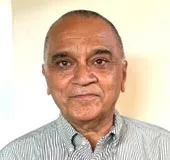-
CENTRES
Progammes & Centres
Location

A minimum stake of 10 percent makes others take you seriously, unless you have fossil-fueled military muscle and an inherited human-capital assets base, like Russia.Political compulsions drive subsidies, like the annual direct transfers to over 100 million farming families or the distribution of free food through the public distribution system during the pandemic. These services are necessary for a section of the beneficiaries. But the lack of targeting bleeds public resources and perpetuates expectations of more hand-outs, as a series of elections loom. The tax revenue of the Union and states increased at a steady but glacial pace from around 14 percent of GDP (2000-2004) to 16 percent (2005-2014) and around 17 percent thereafter till 2020-21. The one percentage point of GDP increase in the post 2014 period is commendable considering that GDP growth waned significantly from 2017-18 onwards. To be sure, over the last seven-odd decades, access to political and economic power have become more porous. Affirmative action for the under privileged has helped broaden the political and bureaucratic elite beyond the numerically smaller upper castes. And liberalization of the economy has opened opportunities in the private sector for the meritorious and the courageous, including as entrepreneurs. India’s “unicorns” are not founded by the traditional business elites. And corporate executives are head-hunted not because of their lineage but for their sales, engineering or financial smarts. There is much to be proud of in the new India. This is good news. But it is from the past. Far reaching reforms for enhancing social and economic equity via faster economic growth are yet to come. Reforms to make the agricultural elite exit from their comfortable cocoon of administered cereal prices, were ended, in the face of intractable opposition. Similar fears of a political backlash, stymy public sector (banks and industrial units) reform, perpetuating market distorting regulations, stifling competition, productivity, jobs and the enlargement of subsidies. The pandemic has pushed the combined public debt to 90 percent of GDP, the fiscal deficit to around 7 percent of GDP (2021-22), versus the elusive 2 percent targeted in 2003, tax revenues are inflated by union excise tax on petroleum products – receipts 75 percent higher than 2018-19 till November 2021, inflation expectation is 5.7 percent (Q4 2021-22 RBI). This portends a fiscally constrained 2022-23. Taming inflation will require toning down union excise duties on petroleum and/or higher interest rates. With future real growth at around 6.5 percent of GDP, the conundrum will be how to match the enlarged populist programs with the constrained tax base and yet pull the fiscal deficit in line with stability metrics.
Taming inflation will require toning down union excise duties on petroleum and/or higher interest rates.Municipal taxes are a neglected tax base which generate a tax resource of just 0.25 percent of GDP versus the potential of at least 1 percent of GDP. Bengaluru was able to increase its property tax revenue by 2.6X over three years (2008-2011) by intensive survey of the tax base using GIS mapping of the city buildings. Incentivizing vertical urban growth enhances property values and tax revenue. Sadly, municipal governance stays stymied by inherited colonial pessimism about the ability of local self-governments to deliver and partly by fear of the political-economy transitions induced, if India’s 44 urban agglomerations, where 61 percent of urban India lives, become autonomous of state government control- a reform which could unleash significant growth impetus. A more systematic liberalization and privatization agenda, devolution of governmental powers and mandates, the elimination of expensive inter-governmental mandate-overlaps (the reason for competitive populism between the state and the union) can conserve public resources, whilst reduced income and corporate tax deductions can nudge tax revenues towards a sustained 20 percent of GDP. Yesterday’s soft budget constraint and low-level equilibrium centric, model of development, has now come to its natural end. Government finances are stretched to breaking point and core sovereign mandates are suffering. Doing nothing over the next two years will progressively degrade growth, stability, and equity metrics. Substantive change will hurt the privileged and invite high political risk, albeit with a potential economic upside. It is a Hobson’s choice, made more difficult by the enduring pandemic related dislocations.
The views expressed above belong to the author(s). ORF research and analyses now available on Telegram! Click here to access our curated content — blogs, longforms and interviews.

Sanjeev S. Ahluwalia has core skills in institutional analysis, energy and economic regulation and public financial management backed by eight years of project management experience ...
Read More +